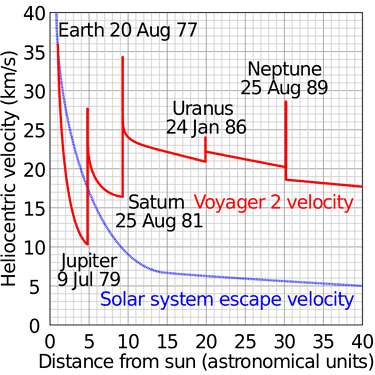I know, maybe fusion reactor will add to GT6. GT6 is very different from GT5, it’s more innovation. So I think, you can add a new kind of fusion reactor - Heavy element fusion reactor!
The giant reactors appear in a film adaptation of liu cixin’s novel Liu Lang Di Qiu (Stray Earth), It uses rocks as fusion material. In the original, it spewed out so much plasma that it could even propel the earth.
I think it should still output plasma, and i think you can reclassify fusion reactors, such as the tokamak ring for light elements, and the heavy elements fusion (such as Naquadah in GT5) uses it for processing.
I think GT should also add fission reactors
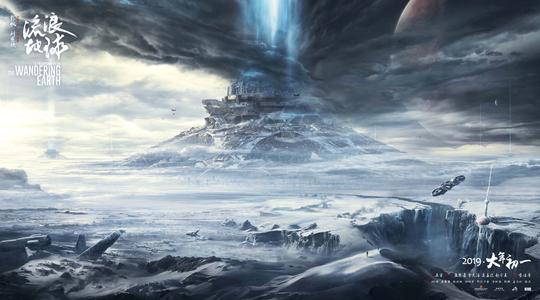
You should probably explain how the fusion reactor works, I can’t see rocks being a good fuel source.
Yeah for Fusion the Rule is “The Lighter the Element the more Power you get”, using Rocks is kinda counterproductive especially since profitable fusion stops at Iron, since anything that fuses TO iron will suck up much more Energy than is produced, which is the Reason many larger Stars have Iron Cores.
In fact, I think a little nuclear physics knowledge is needed.
According to the specific binding energy curve (below), when an element with a lower specific binding energy is converted into an element which has bigger specific binding energy, the nuclear reaction will release energy, means it can be used to produce energy.The bigger the difference from the specific binding energy, the more energy is released in reaction.
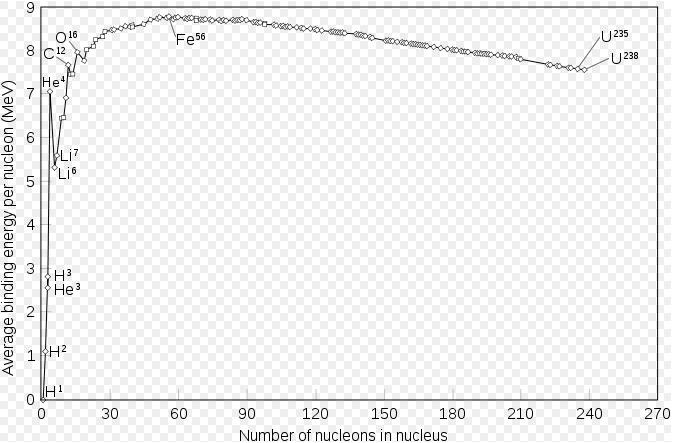
In this picture, you will find, when very heavy elements like U-235 are converted into light elements like Ba-138 and Kr-95 (fission), the specific binding energy have increased, so they are available.
Also, very light elements like H can have fusion reaction.(D + T --> He + n) They are available too.
This hydrogen fusion reaction changes more specific binding energy than the uranium fission reaction, so the energy released is naturally more.
But if you want to combine two heavy element into one, you will decrease its specific binding energy (look at the part which after Fe) , means costing energy, you should use an particle accelerator to give them kinetic energy.
the wandering earth is a better translation
Something I don’t like about these concepts is that they are just way too entirely unrealistic. To use earth as raw mass, and using that mass in a perfect anti-matter-like mass-to-energy conversion (which fusion does not get anywhere near), you’d end up using something like 97% of the entire mass of Earth itself just to be able to propel earth to escape velocity, and that’s counting the mass reduction over time.
Secondly, rocks would not make good fusion material. The way both Fission and Fusion both work is that they take Some elements and bombard them in such a way that they fall to a lower energy state, releasing more energy than it took to get them over the ‘hump’ of falling into the lower state. Because of this, the fuels that are best for fission are the exact opposite of the fuels that are best for fusion and vice-versa, with a whole swath of materials in between that in general useless waste mass.
Fission reactors don’t output plasma, they output heat.
Fusion reactors can ‘use’ plasma as a catalyst, but they don’t output it (doing so would lose the reaction process) and their output tends to be either heat, energetic neutrons, or often both.
Both processes are very useful, but they aren’t magical and certainly can’t run on <random-thing/>.
Ehhh, not necessarily. You need to be able to combine things that fall into a lower energetic quantum state, which though yes certain type of hydrogen and so forth is good at, so are some heavier things. Fission does the same, things fall into a lower energetic quantum state, though via a different process.
“Binding Energy” is the lower quantum energy state, I.E. it takes ‘more’ energy to get out of that state the lower the quantum energy state is.
This graph is accurate for what it shows, but there is a LOT of ways to ‘setup’ atoms that would make that chart significantly more jumpy if you actually mapped everything.
Ah! That’s the book he’s referencing, I’ve heard of it, and also how bad the science is in it.
But yes, adding Fission, Fusion, and Antimatter processes would be amazing. Fission and Fusion could be energy positive, though antimatter I don’t think would be energy positive, like at all, but it would be the most dense energy storage that you could really create, so it would make for fantastic single-use Antimatter-Cell Batteries or something (sounds like a ZPM in that way, though I think in the SG universe, ZPM’s store energy in a pocket dimension, so potentially a whole lot more energy storage).
I think those huge fusion engines will drive themselves into the earth.
Their neutron radiation should also be considered.
Oops, I forget to add specific before binding energy, have already corrected it.
Yes, I know. I saw a lot of book about these. Wandering earth is science fiction. So something is not so scientific. But I think maybe we are not must to fusion super heavy element like U-238(haha). Maybe we can use lithium, oxygen, magnesium or others. My idea is mainly about a fusion reactor use more common materials.
Now I have a new idea, make a fusion reactor like production machines, it’s not primarily for capacity but for making heavy elements.
Perhaps light element fission is also possible. Haha, but I think antimatter is better.
for dnk’s (sorry, I can’t reply you before others reply me)
I saw this image some years ago. But stone is not all made of Uranium. I think maybe we can use something a bit heavier, the more common ones. Less capacity is not a problem, if one day you can extract something have a little productive from the rock, you can win by volume. After completing most of the GT processes, I think it can be used as some final production machines. You know, even though thermal power is not very efficient, China still generates billions of kilowatt-hours of electricity from coal in tens of thousands of thermal power plants.
I agree that the plan in the science fiction is not practicable due to radiation, over-heat, and other stuff, but to accelerate Earth to escape velocity does not need 97% of the Earth mass.
The following is a combination of my idea and revise of another guy’s calculations in english to prove this:
Use the following equation to solve the escape velocity of the Sun: 42.2km/s

The linear velocity of Earth Revolution: 29.9km/s

Therefore, the Earth needs to increase 42.2-29.9=12.3km/s to reach the sun escape speed. (Note that here is the algorithm for accelerating the Earth, not for launching rockets from the Earth, the calculation method is different from the third cosmic speed)
Ejecting speed of the earth engine:
It is estimated that the specific fusion of deuterium fusion is 1.500000 seconds and the exhaust velocity is 15000 km/s. (From “Introduction to Star Trek”, Chapter 7, Section 6)
Assume that the heavy element fusion engine and the ejecting speed is the same.
The amount of energy that is converted into energy in a nuclear reaction is very small, usually only a few thousandth of the total mass. The main consumption of the earth engine is to spray the particle stream generated by the reaction into space, so the mass lost in the nuclear reaction is ignored here, and only the mass of the sprayed working medium is calculated.
Principle: The rocket’s jet acceleration process obeys momentum conservation
M1/M2=0.00018 is the ratio of Earth mass after and before the acceleration:

In other words, when the earth accelerates to the speed of the sun’s escape, it loses about eight ten thousandths of its mass. Assuming that the Earth is a homogeneous sphere with a radius of 6400km, the entire surface of the Earth will be scraped off 1.728 kilometers. This is unbearable for the earth.
If you want to accelerate to the speed of light that is five times the number of light in the film, that is, 1,500 kilometers per second, you need to spray a dozen of the earth. This is equivalent to scraping off the surface of the earth more than 200 kilometers deep, and all known ecosystems, underground cities, and planetary engines will disappear.
If we consider the decelerating process in the story in order to enter the Centauri-Alpha system, another great mass must be consumed.
Although it is practically impossible, the sci-fi story of the Wandering Earth derived from the theoretical possibilities, built a magnificent engineering plan for us, describing a magnificent history of the struggle between man and nature and warm praise. The spirit of human beings will never admit defeat. From the grandeur of imagination, the deep description of human nature and society, and the inspiration of the novel itself, this novel and film are masterpieces in the history of science fiction.
P.S. The calculations are not precise. I will do another english version with better format when I have spare time latter.
As @YangYe said,
The rocks in Earth have great varieties of composition and most of them are composed of silicate I expect, which are composed of Silicon, oxygen, and some light metals. Though they may cannot be used efficiently but theoretically they make the production. As we can see in the specific binding energy curve @dnk1234567 has referenced, before Fe there is still many elements doable for fusion, though not at a very steep slope. (which means they are not as efficient as H to He)
I am looking forward to see how Gregtech can incorporate these futuristic ideas. They are fantastic, and we should be more open-minded and innovative when receiving suggestions like this one. Thank you, @YangYe .
At last, I really recommend you to read The Wandering Earth novel. It farbics a much broader, deeper meaning of its universe, with humanities values.
Fusion and Fission Reactors are both planned for Gregtech as far as I know, just not rock eating ones.
and I think @OvermindDL1 was more referring to accelerating the earth from a dead stop rather than slingshotting it out orbit with the sun which is what I think you are talking about. changing its apogee would take far less energy than shoving the entire Earth i’m sure.
Yes, but you cannot ignore the Earth revolution velocity which is very huge. And stopping into the target system also does not need to stop the Earth to rest
In fact, the earth is moving in the solar system and in the Milky Way, In that novel, escape velocity is achieved not just by fusion reactors, but by Jupiter’s gravitational slingshot
I understand, GT doesn’t need that thruster, but I think Gregtech can add recipes in the fusion reactor of fusing processed, pure, gaseous, heavier elements such as O, Mg, etc.
You are right, I almost forget that.
Yes, other element a bit heavier than hydrogen is possible for fusion. Hydrogen for efficiency, other for big volume.
And do remember, gravitational assist ‘slingshots’ will not add or remove speed, rather it only redirects it.
"In orbital mechanics and aerospace engineering, a gravitational slingshot , gravity assist maneuver , or swing-by is the use of the relative movement (e.g. orbit around the Sun) and gravity of a planet or other astronomical object to alter the path and [speed](Speed - Wikipedia) of a spacecraft, typically to save propellant and reduce expense. "
— Wikipedia.
It is actually easy to understand the principle. Imagine you, standing on platform, throw a ball at 10m/s at a moving train at 20 meter/s. The driver will see the ball traveling towards him at 30m/s and leaves at 30m/s, while you will see the ball traveling at 50m/s toward you because the train has a motion of 20 m/s.
The ball is the Earth, the train is Jupiter, and the platform is the Sun. Earth travels toward Jupiter and gains the speed by having a “gravitational collision” with it and gains the kinetic energy from Jupiter while Jupiter loses the same amount of energy. Earth loses kinetic energy if it goes against the velocity direction of Jupiter, which you can imagine as throwing a ball at the back of the train in the previous analogy. This also means gravitational slingshots can alter the speed of objects up or down.
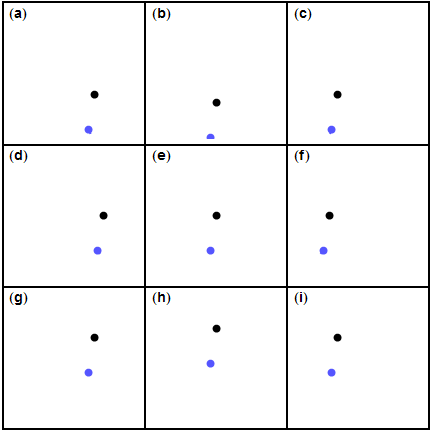
The heliocentric velocity(velocity in the reference of the Sun) change of Jupiter due to the loss of energy can be ignored because of its huge mass compared to that of any spacecraft, but not if it is Earth being the “spacecraft”. Earth has 5.97×10^24 kg of mass, while Jupiter has 1.90x10^27 kg of mass, so Jupiter’s heliocentric will decrease by about 0.25%.
In fact, NASA has done many missions applied with this principle. For example, the Voyagers, Kepler, etc.

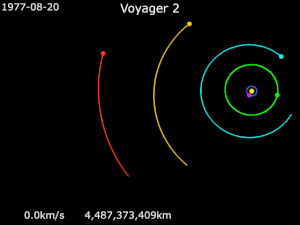
[Plot of Voyager 2’s heliocentric velocity against its distance from the Sun, illustrating the use of gravity assist to accelerate the spacecraft by Jupiter, Saturn and Uranus. To observe Triton, Voyager 2 passed over Neptune’s north pole resulting in an acceleration out of the plane of the ecliptic and reduced velocity away from the Sun.]
Yep, precisely, although saying ‘speed’ is a bit wrong as the relative velocity between the orbital reference frames remains the same, being able to change the orbital path is hugely useful in saving on fuel if you already have the necessary orbital speed. ^.^
yes, it is good.
why this post going to discuss about gravitational questions although it named “about fusion reactor” 
